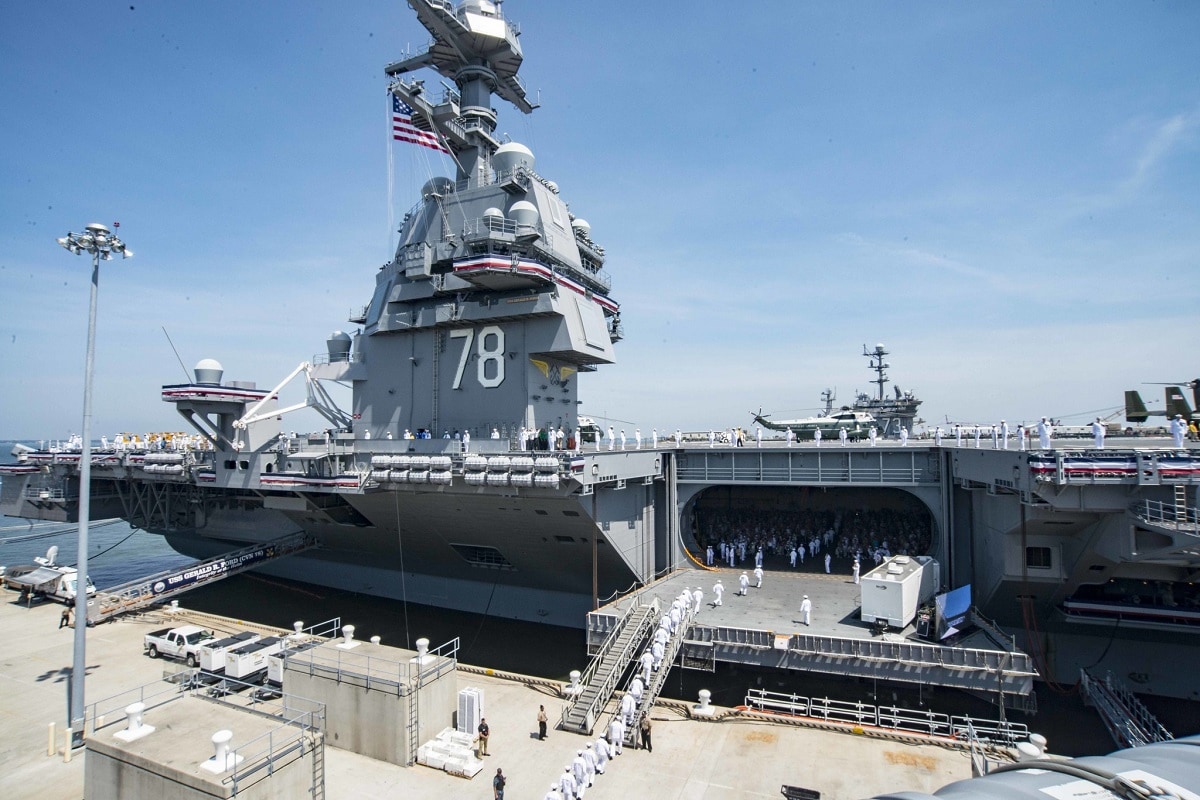The commander of the US Navy’s 7th Fleet stated recently he would like to see a lot more US and allied aircraft carriers in the Indo-Pacific region to deter rivals China and Russia, The Wall Street Journal reported.
Following a multinational naval exercise in October involving two US aircraft carriers, a British carrier, and a Japanese helicopter carrier, the US Navy linked up with Japan, Australia, Canada, and Germany in November for Pacific drills.
During that most recent exercise, 7th Fleet’s Vice Adm. Karl Thomas called the joint force “an incredible amount of power” but noted that more would be better to send a message to potential adversaries that “today is not the day” to start a fight, WSJ reported.
Thinking “about how we might fight, it’s a large water space, and four aircraft carriers is a good number, but six, seven or eight would be better,” the fleet commander said.
The US Navy has a large fleet of just under a dozen nuclear-powered aircraft carriers but does not deploy them all at once or in large numbers to any one region.
The sea service has one forward-deployed aircraft carrier in the Pacific and routinely operates a second, and in some cases a third, in this region. While most US carriers continue to be armed with fourth-generation F/A-18 Hornets, one US carrier, USS Carl Vinson, has been operating in the Pacific with fifth-gen F-35s.
Augmenting the US carrier force are amphibious assault ships armed with short takeoff/vertical landing variants of the stealth F-35 jet, as well as the carrier capabilities of partner nations.
US aircraft carriers have the ability to bring significant combat power to a fight and have long served as important power projection assets, but China, as a major Pacific power, is attempting to develop the capabilities to take these assets out of the fight.
China has an arsenal of DF-21D and DF-26 anti-ship ballistic missiles, so-called “carrier killer” missiles, and has, according to the Pentagon, fired them against moving targets at sea.
Earlier this month, satellite images showed a mock-up of a US Navy aircraft carrier, as well as some other ships, in the desert in western China near an area that has previously been used for target practice for the Chinese rocket force, USNI News first reported.
The expectation is that the mock-ups discovered in the desert will be used for practicing missile strikes against naval assets.
Both Russia and China have conducted military exercises in the Indo-Pacific region focused on defeating an enemy carrier strike group.
While China, through an anti-access/area-denial strategy, is working to limit the ability of US carriers to fight close to its shores, the country is also building its own carrier force.
China currently has two carriers. The Liaoning was built using the hull of an older Soviet vessel, and the Shandong is a Chinese-built copy of that first ship with some upgrades.
The Chinese carriers closely resemble Russia’s sole aircraft carrier, the Admiral Kuznetsov, and are distinguished by their ramp-assisted aircraft launch systems, which can limit a carrier’s combat capability.
A third aircraft carrier is in the works though and could be ready to launch in the coming months, according to analysts. China’s new aircraft carrier appears to be a larger, more modern vessel equipped with catapults and other improvements.
Experts have said that when this carrier “eventually enters service, it will be a formidable addition to China’s navy and allow it to more effectively project power.”
Additionally, China is in the process of developing a new next-generation carrier-based fighter to either replace or augment its fleet of fourth-generation J-15s.
China has the world’s largest navy and an extremely robust shipbuilding capacity, according to US military assessments, and the US and others have repeatedly raised concerns that it may choose to use its growing military might to aggressively pursue its interests in the region. The US and its partners have a number of concerns about Russia as well.
Commenting on the recent joint exercises with US allies and partners, Thomas said that such drills are necessary to “deter aggression from some of these nations that are showing burgeoning strength” and to “tell these nations that maybe today is not the day.”
Ryan Pickrell is a senior military and defense reporter at Business Insider, where he covers defense-related issues from Washington, DC.

